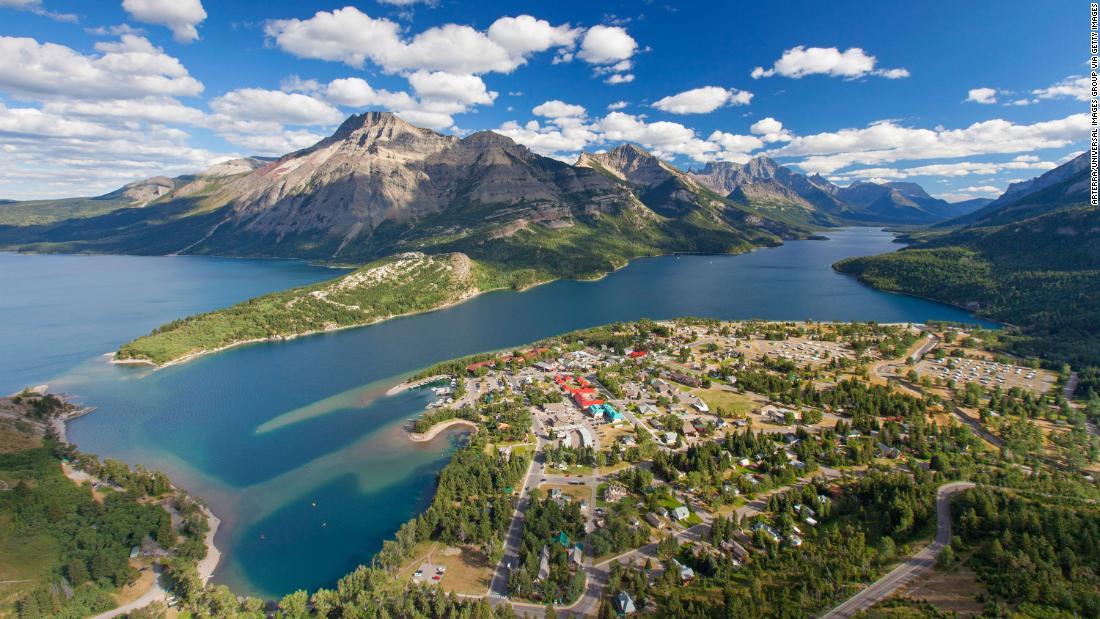(CNN) – Disasters caused by human activity and climate change have transformed the 10 internationally recognized forests on the planet, also known as World Heritage Sites, from carbon absorption to its release, the researchers found.
The UNESCO report states that these sites absorb about 190 million tons of carbon dioxide from the atmosphere each year, which is about half of the UK’s annual fossil fuel emissions.
But over the past 20 years, many emissions from these sites have increased, with some exceeding the amount of carbon removed from the atmosphere.
According to UNESCO researchers, there are two main factors behind the conversion of forests from sinkholes to carbon sources: extreme weather events caused by climate change, Wildfire, Storms and Droughts, And human pressures on land use such as illegal logging, agricultural practices such as logging and grazing.
Tree logs stacked amid deforestation in the Mahonjwa Mountains near Barburton, Mumlanga in 2018.
Considering the size of this forest, Tales Carvalho Resente, project officer and co-editor of the UNESCO Natural Heritage Division, says it is increasingly a global problem, i.e. one that requires global action.
“What the results reveal here is that it doesn’t have to be a problem related to a particular country or region, but it really is a global problem,” Recende told CNN. “When you look at where the 10 places that have become carbon sources are, they are scattered all over the world, so the end result is that global action is needed.”

According to UNESCO, a woman sits on Jawabai Point, south of Rim Hill, overlooking the Grand Canyon, one of the three World Heritage Sites in the United States that has become a source of carbon emissions.
Across the Congo bed Redwood National and State Parks, The planet’s 257 World Heritage forests cover an area of nearly 700,000 square kilometers, which is twice as large as Germany.
But since 2000, threats from extraction industries, environmental degradation and climate change have been recorded on about 60% of the World Heritage Sites, which have lost more than 348,600 hectares of forest, more than Belgium. Of the 10 sites that have become carbon emitters, three are in the United States.
The report’s findings are a timely warning of the limitations of trees and forests as a climate solution. Leaders and negotiators will meet in Glasgow, Scotland from Sunday to discuss ways to control global warming, and tree planting is one of the top four priorities identified by the UK government leading the event.
Forest conservation and tree planting have enormous potential to absorb carbon from the atmosphere, but in a rapidly changing world, trees in wildfire-prone areas may become part of the world. As these UNESCO sites show, the problem, instead of the solution.

On February 21, 2020, two men walked through the fire-ravaged area of the Great Blue Mountains World Heritage Site near Blackheath, Australia. Credit: Brooke Mitchell
The authors point out that this is the first time that researchers have measured how global heritage forests sort atmospheric carbon dioxide. Over the centuries, World Heritage forests have stored about 13 billion tons of carbon, which is more than the total amount of carbon in Kuwait’s oil reserves.
“We can now see the important role that World Heritage forests play in sustaining the global climate,” Nancy Harris, director of research at the World Wildlife Institute’s World Forestry Laboratory and co-author of the report, told CNN. “The truth is, we completely underestimate and underestimate them.”
Most tropical and subtropical regions, such as South America and Australia, have high carbon dioxide emissions. Those places though They continue to separate carbon, There are indications that more of them may be sources of carbon, the researchers said.
Wildfires, in particular, have burned vast areas of this forest in recent years. Although fires are an important component of forest ecosystems, scientists say they are intensifying because many plant species depend on them to scatter their seeds, which could release long-stored carbon in the soil and trees.

View of the Half Dome from a glacier point in Yosemite National Park. According to UNESCO, this World Heritage Site has become a source of carbon emissions rather than a sinkhole.
Over the past decade, rising temperatures and droughts have created an environment conducive to wildfires. The report points to several examples of major fires over the past decade at World Heritage sites, including Lake Baikal in Russia in 2016 and the Tasmanian jungle and the Great Blue Mountains in Australia in 2019 and 2020.
“In some places we have seen some wildfires emitting more than 30 million tons of CO2, which is the equivalent of being ejected from Bolivia’s fossil fuels in a year,” Resente said.
“An event can really match the emissions of an entire country,” he added. “You should also keep in mind that the emissions calculated in the study are only within the boundaries of the sites, so they represent only a small part of the fire in the big picture.”

Emerald Pond and Waterfall at Morne Trois Pitons National Park in Dominica.
The report is based on recently released maps monitoring global carbon emissions between forests and the atmosphere during the period 2001-2020, using site-level monitoring to analyze the climate impacts of forests and the effects of human activities on this world heritage. Sites.
“Our analysis illustrates how to stop taking nature for granted and evaluate the climate benefits created by these and other important forests around the world,” Harris said.
Forests play an important role in all communities. According to the International Union for Conservation of Nature, which contributed to this report, About 25% of the world’s populationTo a large extent in developing countries, forests depend on it for its livelihood. In addition, forests contribute up to US $ 100 billion a year in goods and services. They are also home to 80% of the Earth’s biodiversity.

Tourists photographed Mount Kinabalu in Malaysia in 2015.
The ability of forests to prevent climate crisis from getting out of control makes the threats they face even more worrying, Resente said.
World leaders will meet next week in Glasgow, Scotland International Climate Negotiations Funded by the UN, it seeks to ensure that countries further reduce fossil fuels and establish deadlines for coal use. They will discuss the strong commitments to protect and restore the planet’s forests from carbon sinking and end deforestation.
“We hope to truly unleash climate action to protect these gems, which are World Heritage Sites,” Resente said. “They are laboratories of environmental change as a whole, not just climate, but biodiversity. We want to facilitate dialogue with key actors to fund these sites and provide some sustainable investment.”


:quality(85)/cloudfront-us-east-1.images.arcpublishing.com/infobae/6B7ZCEUFJVGPTHNSK6HPHYQDBI.jpg)

/cloudfront-us-east-1.images.arcpublishing.com/eluniverso/DGEW35D77RGBVJEROWSX2HRSJU.jpg)
